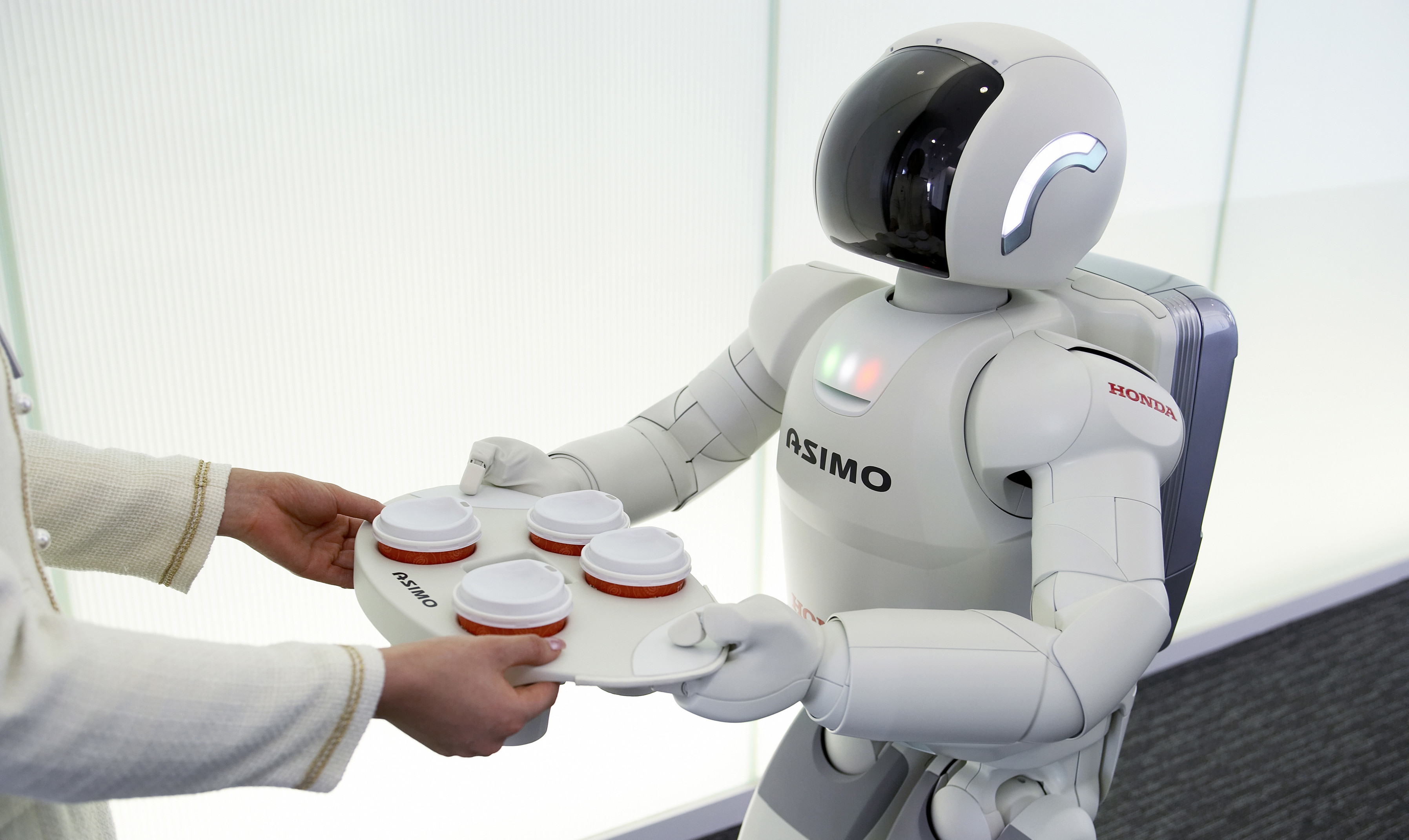If you were visiting Georgia Tech on October 15th of this year, you would have likely been amazed by one of the most revolutionary tech shows of our time. This was not another conference by Apple or its competitors showing another variation of a touch screen tablet. This was an IEEE-RAS (Institute of Electrical and Electronics Engineers-Robotics and Automation Society) International Conference on Humanoid Robots. The exhibition displayed some of the most sophisticated robots of our generation. These humanoids can stand on their own, move naturally by employing airmuscle technology and speak in a British accent. Some even look convincingly human. As with every emerging technological field, we are faced with the question, is this new direction worth supporting?
In the United States, the Department of Defense has been the leading government entity to sponsor research and development of humanoid robotic technology. Last year, a branch of the DoD — the Defense Advanced Research Projects Agency (DARPA) — established a robotics competition to spur development in this field; the winner’s prize — two million dollars. The DoD claims that the goal of the DARPA Robotics Challenge is to “generate groundbreaking research and development so that future robotics can perform the most hazardous activities in future disaster response operation.” Imagine, for example, having a fire emergency response team composed entirely of robots. They could enter buildings engulfed by smoke and flames, save lives, stop fires, while protected by an epidermis of fireproof aluminum alloy. For a more current example, imagine how valuable these humanoids would have been during the Fukushima nuclear reactor disaster. Many officials and inspectors had to be exposed to harmful radiation in order to save the plant and mitigate environmental damage, and even this was not enough to prevent significant radiation leakage. Robots would have been able to move into the scene at a lesser human cost. The possibilities are surely endless and beyond what we can currently imagine. It is this optimism that should drive how research and development on humanoids is funded.
Regrettably, the Unites States government has been very slow in fostering this technology, despite all of the money it allocates for research and development. Instead, it is mostly the private sector that is providing resources for the development of such technology. But most of the few dozen companies that focus on the development of humanoids are either Japanese (such as Honda, the creator of ASIMO) or European (Aldebaran in France) — only a handful are American. The massive costs and financial risks involved in humanoid robotics projects, however, suggest that the government will have to lead development in this field.
Government support for research programs, even those intended for military or space programs, have provided mankind with important developments. The technology developed by NASA to service their spacecrafts is what inspired computerized robotic surgery that can be performed by a surgeon from across the globe. Artificial heart pumps that allow people to live with a faulty heart for months are based off of the designs for the fuel pumps of NASA’s space stations. Among other technologies that NASA gave us are GPS, PTFE-Coated Fiberglass, and even ear thermometers. The list is quite exhaustive, and the development of humanoid technology can lead to a cascade of similar positive opportunities. If development of humanoid technology is left to the private sphere, we are at risk of falling behind competing nations. More alarmingly, if the private sector succeeds on its own, patents can put exuberant tag prices on what could have been a public good, much like the case of pharmaceuticals.
However, this case does raise a sobering question: is the military — one of the government’s most prominent research entities — not also the same entity that appropriates technological advancements for bellicose purposes? In fact, this past decade has witnessed a prime example of militarized robotic technology: Unmanned Combat Air Vehicles (UCAVs), more popularly known as drones. Can’t these robots be used for harm as well? The answer is an unfortunate yes. The potential for harm is just as great as the potential for good. But one must have faith in our democratic system. We must be assured from previous experiences that, at least domestically, our voices and concerns are heard and responded to. This is why the DARPA competition is a refreshing sight. It allows the developers and creators from all over the country to make the technology essentially their own, but with the indispensable funding of the government. For our progressive future, we must not conflate technological advancement with death and destruction.Our future depends on our ability to adapt, and we should not be hesitant to advance ourselves even if there is some potential for harm. It can be argued that the entirety of our recent past has been one shaped by war and run by tyranny, but we now live in an age that is seen as the most peaceful and the most democratic time in human history. Should we not use the peaceful conditions of this age to allow for the proper advancement of our lives? One might argue that it is even obligatory for our generation to take advantage of the circumstances that it is in. And if we should start anywhere, it should be in the flourishing of a field of science and technology that carries the prospects for a great future. Let us not allow the anchoring weight of our Orwellian past slow the force of a utopian future.
